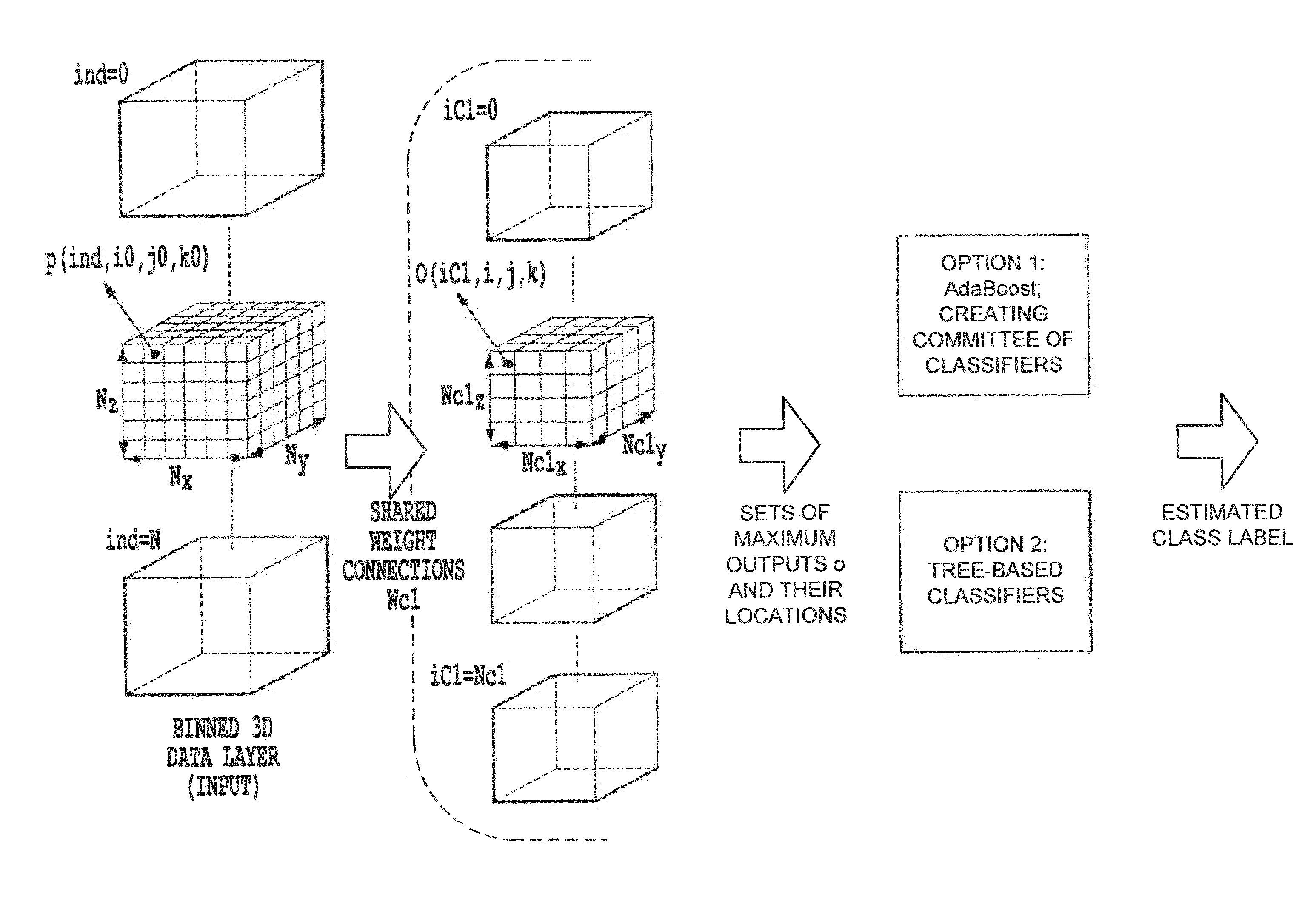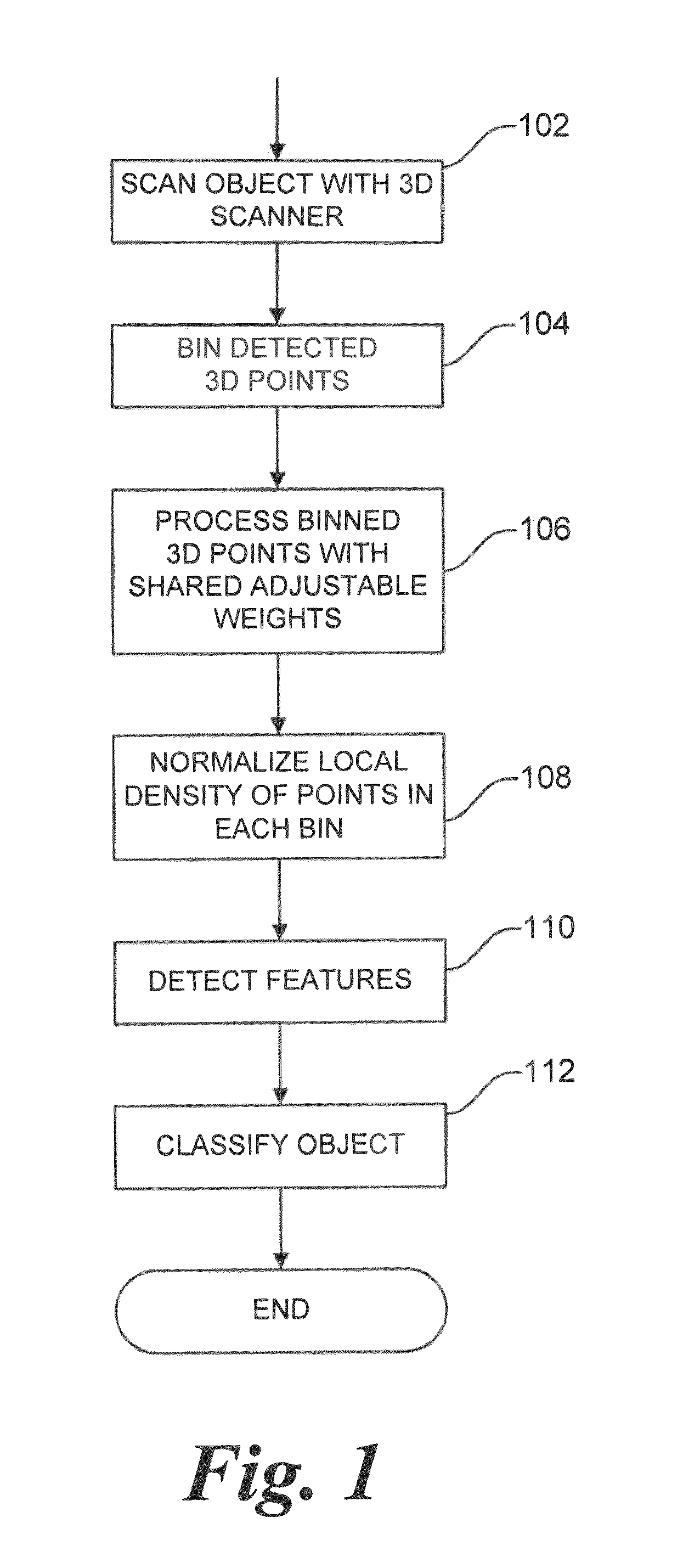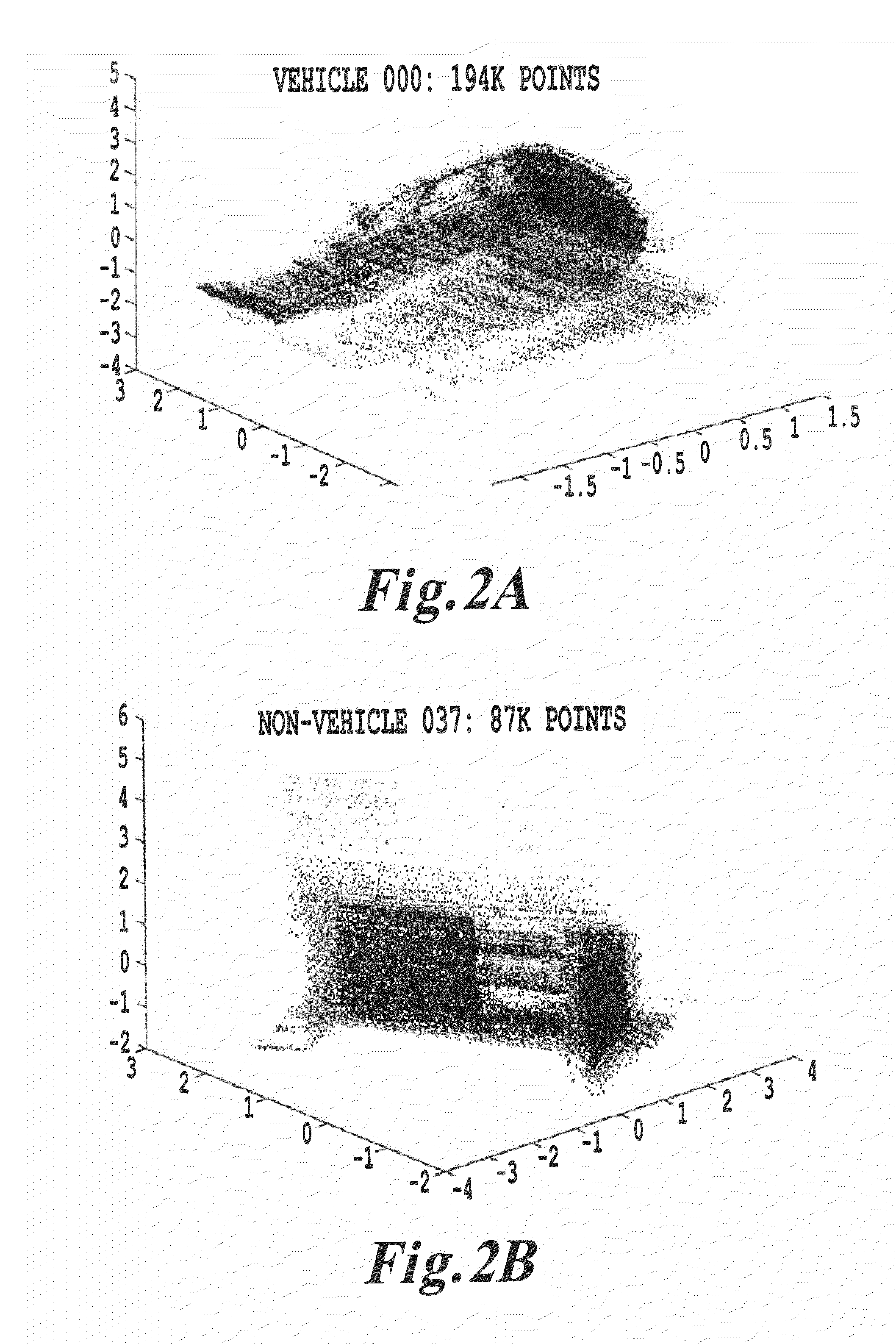System and method for object recognition based on three-dimensional adaptive feature detectors
a feature detector and feature recognition technology, applied in the field of computerized object recognition, can solve the problems of high computational workload of object recognition, difficult object recognition, and large number of features, and achieve the effect of high accuracy in distance measurements
- Summary
- Abstract
- Description
- Claims
- Application Information
AI Technical Summary
Benefits of technology
Problems solved by technology
Method used
Image
Examples
Embodiment Construction
[0019]Referring now to the drawings, wherein like reference numerals designate identical or corresponding parts / steps throughout the several views. FIG. 1 is a flowchart illustrating steps for calculating an output of processing elements of a computational system according to one embodiment of this disclosure. In step 102, an object is scanned using a 3D scanner. Imaging of an object can be accomplished in three dimensions using both scanning and non-scanning systems. The invention is not limited to a scanning system, but a system providing highly accurate distance measurements is preferred, such as a scanning system employing a 3D laser. Preferably, the 3D laser design includes many laser sending-receiving heads rotating around a vertical axis.
[0020]The data from a 3D scanner can be represented conveniently in three spatial dimensions: X coordinate, Y coordinate, and Z coordinate of the Cartesian coordinate system. However, the computational system of this disclosure can be adapted...
PUM
 Login to View More
Login to View More Abstract
Description
Claims
Application Information
 Login to View More
Login to View More - R&D
- Intellectual Property
- Life Sciences
- Materials
- Tech Scout
- Unparalleled Data Quality
- Higher Quality Content
- 60% Fewer Hallucinations
Browse by: Latest US Patents, China's latest patents, Technical Efficacy Thesaurus, Application Domain, Technology Topic, Popular Technical Reports.
© 2025 PatSnap. All rights reserved.Legal|Privacy policy|Modern Slavery Act Transparency Statement|Sitemap|About US| Contact US: help@patsnap.com



